Sommerville I. Software Engineering (9th edition)
Подождите немного. Документ загружается.


client–server approach as a fundamental paradigm of distributed systems
engineering, and explain various ways of implementing this architectural
style. The final section in this chapter explains how providing software as a
distributed application service will radically change the market for soft-
ware products.
Chapter 19 introduces the related topic of service-oriented architectures,
which link the notions of distribution and reuse. Services are reusable
software components whose functionality can be accessed over the
Internet and made available to a range of clients. In this chapter, I explain
what is involved in creating services (service engineering) and composing
services to create new software systems.
Embedded systems are the most widely used instances of software sys-
tems and Chapter 20 covers this important topic. I introduce the idea of a
real-time embedded system and describe three architectural patterns
that are used in embedded systems design. I then go on to explain the
process of timing analysis and conclude the chapter with a discussion of
real-time operating systems.
Finally, Chapter 21 covers aspect-oriented software development (AOSD).
AOSD is also related to reuse and proposes a new approach, based on
aspects, to organizing and structuring software systems. Although not yet
mainstream software engineering, AOSD has the potential to signifi-
cantly improve our current approaches to software implementation.

Software reuse
16
Objectives
The objectives of this chapter are to introduce software reuse and to
describe approaches to system development based on large-scale system
reuse. When you have read this chapter, you will:
■ understand the benefits and problems of reusing software when
developing new systems;
■ understand the concept of an application framework as a set of
reusable objects and how frameworks can be used in application
development;
■ have been introduced to software product lines, which are made up of
a common core architecture and configurable, reusable components;
■ have learned how systems can be developed by configuring and
composing off-the-shelf application software systems.
Contents
16.1 The reuse landscape
16.2 Application frameworks
16.3 Software product lines
16.4 COTS product reuse

426 Chapter 16 ■ Software reuse
Reuse-based software engineering is a software engineering strategy where the devel-
opment process is geared to reusing existing software. Although reuse was proposed
as a development strategy more than 40 years ago (McIlroy, 1968), it is only since
2000 that ‘development with reuse’ has become the norm for new business systems.
The move to reuse-based development has been in response to demands for lower
software production and maintenance costs, faster delivery of systems, and increased
software quality. More and more companies see their software as a valuable asset.
They are promoting reuse to increase their return on software investments.
The availability of reusable software has increased dramatically. The open source
movement has meant that there is a huge reusable code base available at low cost.
This may be in the form of program libraries or entire applications. There are many
domain-specific application systems available that can be tailored and adapted to the
needs of a specific company. Some large companies provide a range of reusable com-
ponents for their customers. Standards, such as web service standards, have made it
easier to develop general services and reuse them across a range of applications.
Reuse-based software engineering is an approach to development that tries to
maximize the reuse of existing software. The software units that are reused may be
of radically different sizes. For example:
1. Application system reuse The whole of an application system may be reused by
incorporating it without changing into other systems or by configuring the
application for different customers. Alternatively, application families that have
a common architecture, but which are tailored for specific customers, may be
developed. I cover application system reuse later in this chapter.
2. Component reuse Components of an application, ranging in size from subsys-
tems to single objects, may be reused. For example, a pattern-matching system
developed as part of a text-processing system may be reused in a database man-
agement system. I cover component reuse in Chapters 17 and 19.
3. Object and function reuse Software components that implement a single function,
such as a mathematical function, or an object class may be reused. This form of
reuse, based around standard libraries, has been common for the past 40 years.
Many libraries of functions and classes are freely available. You reuse the classes
and functions in these libraries by linking them with newly developed application
code. In areas such as mathematical algorithms and graphics, where specialized
expertise is needed to develop efficient objects and functions, this is a particularly
effective approach.
Software systems and components are potentially reusable entities, but their
specific nature sometimes means that it is expensive to modify them for a new
situation. A complementary form of reuse is ‘concept reuse’ where, rather than reuse
a software component, you reuse an idea, a way, or working or an algorithm. The con-
cept that you reuse is represented in an abstract notation (e.g., a system model), which
does not include implementation detail. It can, therefore, be configured and adapted
for a range of situations. Concept reuse can be embodied in approaches such as design
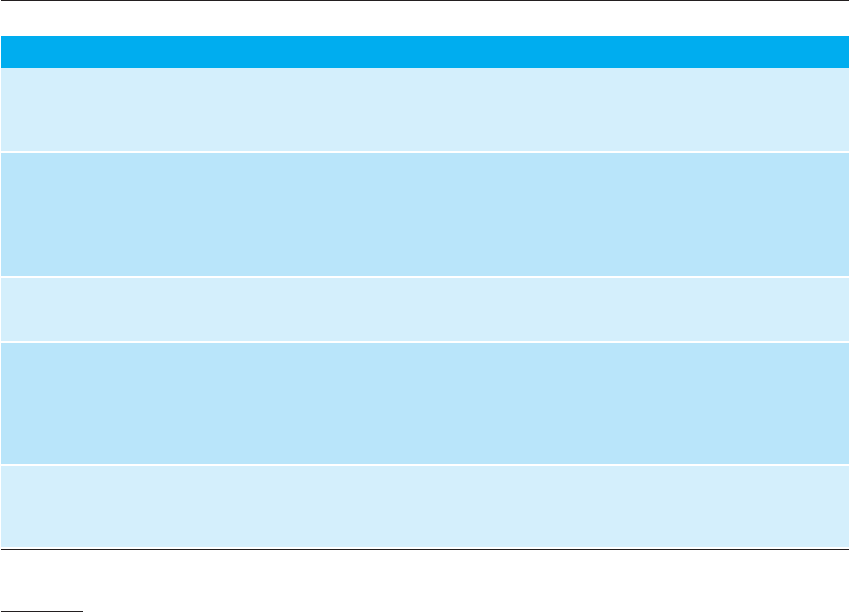
Chapter 16 ■ Software reuse 427
patterns (covered in Chapter 7), configurable system products, and program genera-
tors. When concepts are reused, the reuse process includes an activity where the
abstract concepts are instantiated to create executable reusable components.
An obvious advantage of software reuse is that overall development costs should
be reduced. Fewer software components need to be specified, designed, implemented,
and validated. However, cost reduction is only one advantage of reuse. In Figure 16.1,
I have listed other advantages of reusing software assets.
However, there are costs and problems associated with reuse (Figure 16.2). There
is a significant cost associated with understanding whether or not a component is
suitable for reuse in a particular situation, and in testing that component to ensure its
dependability. These additional costs mean that the reductions in overall develop-
ment costs through reuse may be less than anticipated.
As I discussed in Chapter 2, software development processes have to be adapted
to take reuse into account. In particular, there has to be a requirements refinement
stage where the requirements for the system are modified to reflect the reusable soft-
ware that is available. The design and implementation stages of the system may also
include explicit activities to look for and evaluate candidate components for reuse.
Software reuse is most effective when it is planned as part of an organization-wide
reuse program. A reuse program involves the creation of reusable assets and the
adaptation of development processes to incorporate these assets in new software.
The importance of reuse planning has been recognized for many years in Japan
(Matsumoto, 1984), where reuse is an integral part of the Japanese ‘factory’ approach
Figure 16.1 Benefits
of software reuse
Benefit Explanation
Increased dependability Reused software, which has been tried and tested in working systems, should
be more dependable than new software. Its design and implementation faults
should have been found and fixed.
Reduced process risk The cost of existing software is already known, whereas the costs of development
are always a matter of judgment. This is an important factor for project
management because it reduces the margin of error in project cost estimation.
This is particularly true when relatively large software components such as
subsystems are reused.
Effective use of specialists Instead of doing the same work over and over again, application specialists can
develop reusable software that encapsulates their knowledge.
Standards compliance Some standards, such as user interface standards, can be implemented as a set of
reusable components. For example, if menus in a user interface are implemented
using reusable components, all applications present the same menu formats to
users. The use of standard user interfaces improves dependability because users
make fewer mistakes when presented with a familiar interface.
Accelerated development Bringing a system to market as early as possible is often more important than
overall development costs. Reusing software can speed up system production
because both development and validation time may be reduced.
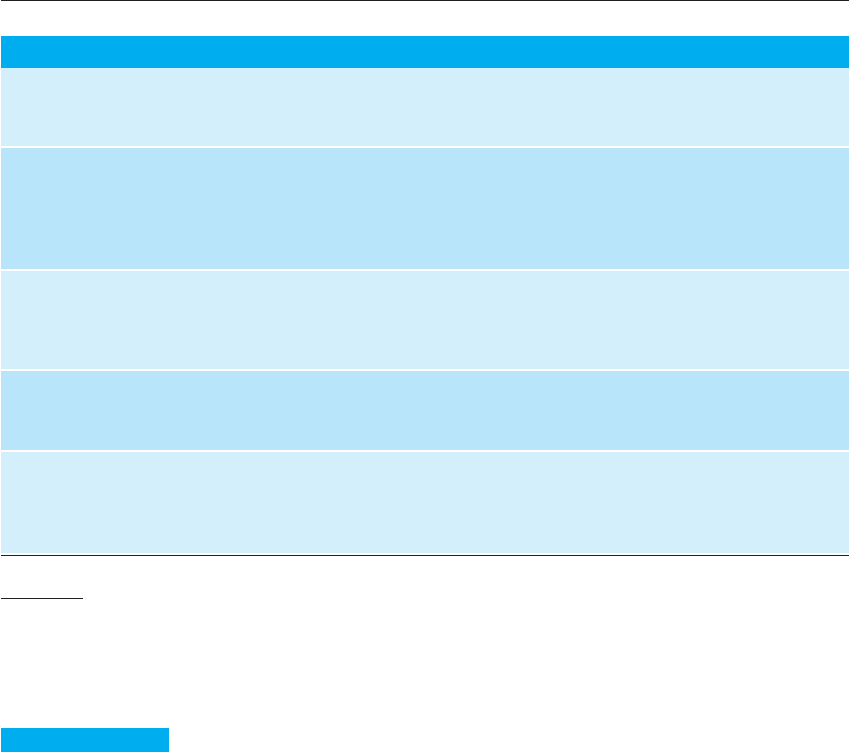
428 Chapter 16 ■ Software reuse
Problem Explanation
Increased maintenance costs If the source code of a reused software system or component is not available,
then maintenance costs may be higher because the reused elements of the
system may become increasingly incompatible with system changes.
Lack of tool support Some software tools do not support development with reuse. It may be
difficult or impossible to integrate these tools with a component library
system. The software process assumed by these tools may not take reuse
into account. This is particularly true for tools that support embedded
systems engineering, less so for object-oriented development tools.
Not-invented-here syndrome Some software engineers prefer to rewrite components because they
believe they can improve on them. This is partly to do with trust and partly
to do with the fact that writing original software is seen as more
challenging than reusing other people’s software.
Creating, maintaining, and
using a component library
Populating a reusable component library and ensuring the software
developers can use this library can be expensive. Development processes
have to be adapted to ensure that the library is used.
Finding, understanding, and
adapting reusable
components
Software components have to be discovered in a library, understood and,
sometimes, adapted to work in a new environment. Engineers must be
reasonably confident of finding a component in the library before they
include a component search as part of their normal development process.
to software development (Cusamano, 1989). Companies such as Hewlett-Packard
have also been very successful in their reuse programs (Griss and Wosser, 1995), and
their experience has been documented in a book by Jacobson et al. (1997).
16.1 The reuse landscape
Over the past 20 years, many techniques have been developed to support software
reuse. These techniques exploit the facts that systems in the same application domain
are similar and have potential for reuse; that reuse is possible at different levels from
simple functions to complete applications; and that standards for reusable compo-
nents facilitate reuse. Figure 16.3 sets out a number of possible ways of implement-
ing software reuse, with each described briefly in Figure 16.4.
Given this array of techniques for reuse, the key question is “which is the most
appropriate technique to use in a particular situation?” Obviously, this depends on
the requirements for the system being developed, the technology and reusable assets
available, and the expertise of the development team. Key factors that you should
consider when planning reuse are:
1. The development schedule for the software If the software has to be developed
quickly, you should try to reuse off-the-shelf systems rather than individual
components. These are large-grain reusable assets. Although the fit to
Figure 16.2 Problems
with reuse
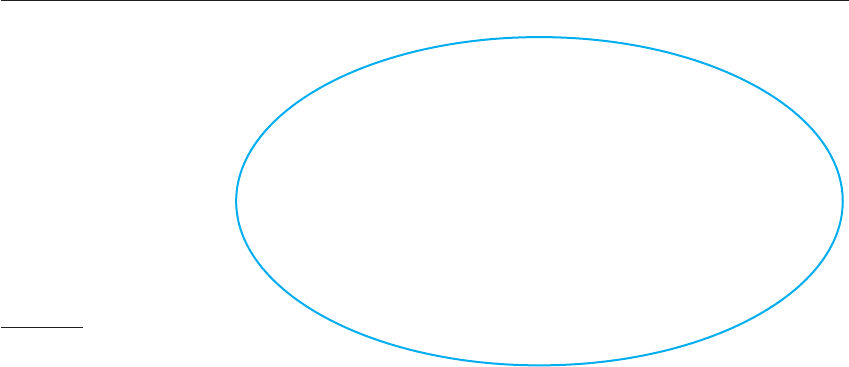
16.1 ■ The reuse landscape 429
requirements may be imperfect, this approach minimizes the amount of devel-
opment required.
2. The expected software lifetime If you are developing a long-lifetime system, you
should focus on the maintainability of the system. You should not just think
about the immediate benefits of reuse but also of the long-term implications.
Over its lifetime, you will have to adapt the system to new requirements, which
will mean making changes to parts of the system. If you do not have access to
the source code, you may prefer to avoid off-the-shelf components and systems
from external suppliers; suppliers may not be able to continue support for the
reused software.
3. The background, skills, and experience of the development team All reuse tech-
nologies are fairly complex and you need quite a lot of time to understand and
use them effectively. Therefore, if the development team has skills in a particu-
lar area, this is probably where you should focus.
4. The criticality of the software and its non-functional requirements For a critical
system that has to be certified by an external regulator, you may have to create a
dependability case for the system (discussed in Chapter 15). This is difficult if
you don’t have access to the source code of the software. If your software has
stringent performance requirements, it may be impossible to use strategies such
as generator-based reuse, where you generate the code from a reusable domain-
specific representation of a system. These systems often generate relatively
inefficient code.
5. The application domain In some application domains, such as manufacturing
and medical information systems, there are several generic products that may be
reused by configuring them to a local situation. If you are working in such a
domain, you should always consider these as an option.
Design
Patterns
Component-Based
Software Engineering
Application
Frameworks
Service-Oriented
Systems
COTS
Integration
Software Product
Lines
Legacy System
Wrapping
Program
Libraries
Program
Generators
Aspect-Oriented
Software Development
Configurable Vertical
Applications
Architectural
Patterns
ERP Systems
Model-Driven
Engineering
Figure 16.3 The reuse
landscape
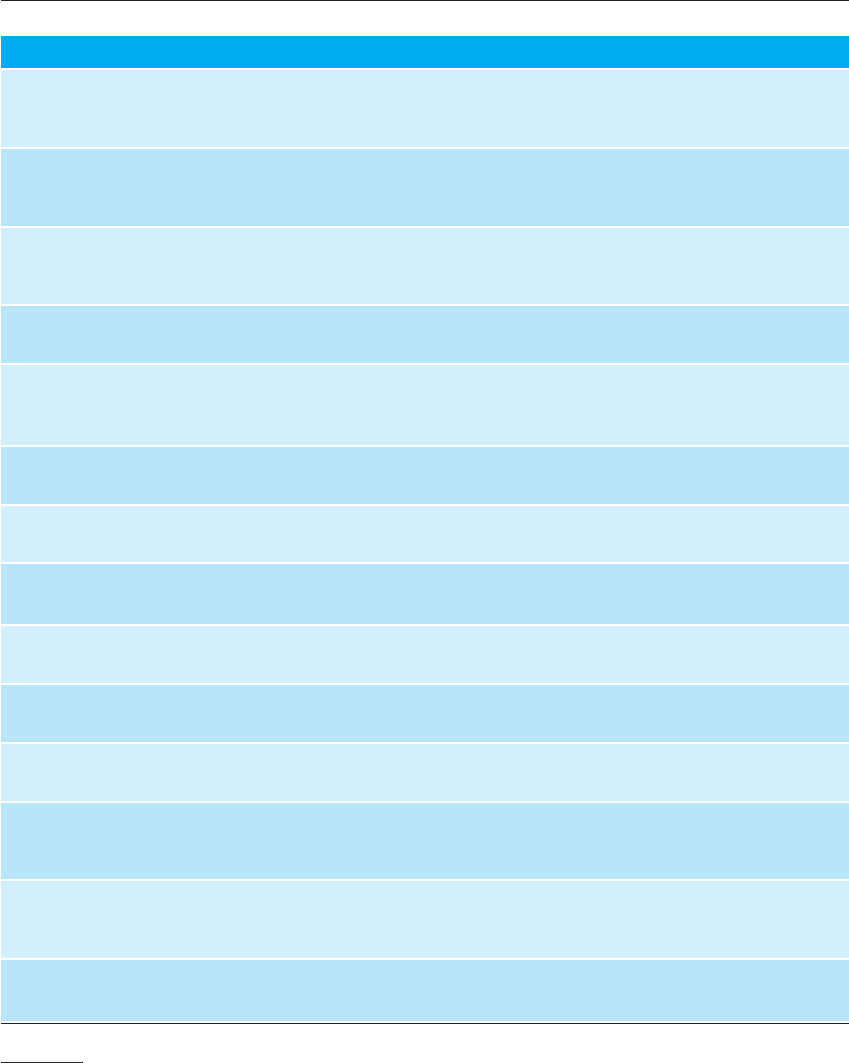
430 Chapter 16 ■ Software reuse
Approach Description
Architectural patterns Standard software architectures that support common types of
application systems are used as the basis of applications.
Described in Chapters 6, 13, and Chapter 20.
Design patterns Generic abstractions that occur across applications are
represented as design patterns showing abstract and concrete
objects and interactions. Described in Chapter 7.
Component-based development Systems are developed by integrating components (collections of
objects) that conform to component-model standards. Described
in Chapter 17.
Application frameworks Collections of abstract and concrete classes are adapted and
extended to create application systems.
Legacy system wrapping Legacy systems (see Chapter 9) are ‘wrapped’ by defining a set
of interfaces and providing access to these legacy systems
through these interfaces.
Service-oriented systems Systems are developed by linking shared services, which may be
externally provided. Described in Chapter 19.
Software product lines An application type is generalized around a common architecture
so that it can be adapted for different customers.
COTS product reuse Systems are developed by configuring and integrating existing
application systems.
ERP systems Large-scale systems that encapsulate generic business
functionality and rules are configured for an organization.
Configurable vertical applications Generic systems are designed so that they can be configured to
the needs of specific system customers.
Program libraries Class and function libraries that implement commonly used
abstractions are available for reuse.
Model-driven engineering Software is represented as domain models and implementation
independent models and code is generated from these models.
Described in Chapter 5.
Program generators A generator system embeds knowledge of a type of application
and is used to generate systems in that domain from a user-
supplied system model.
Aspect-oriented software development Shared components are woven into an application at different
places when the program is compiled. Described in Chapter 21.
Figure 16.4
Approaches that
support software
reuse
6. The platform on which the system will run Some components models, such as
.NET, are specific to Microsoft platforms. Similarly, generic application sys-
tems may be platform-specific and you may only be able to reuse these if your
system is designed for the same platform.
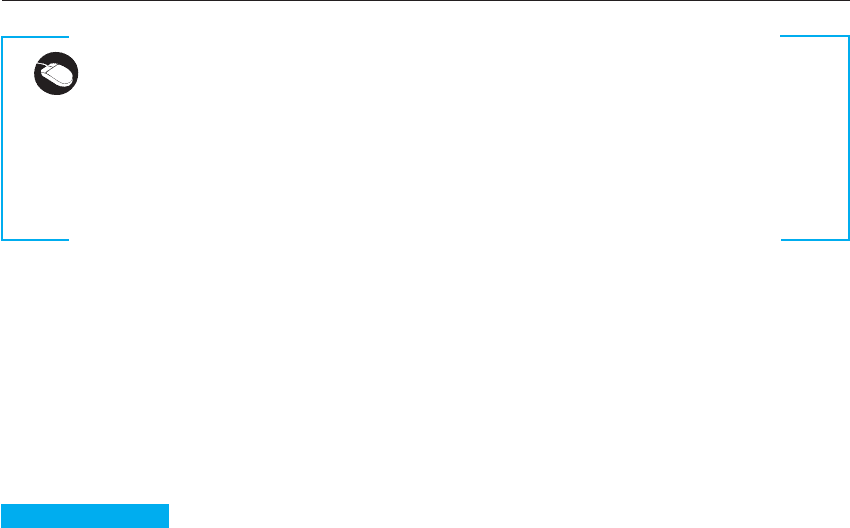
16.2 ■ Application frameworks 431
The range of available reuse techniques is such that, in most situations, there is
the possibility of some software reuse. Whether or not reuse is achieved is often a
managerial rather than a technical issue. Managers may be unwilling to compromise
their requirements to allow reusable components to be used. They may not under-
stand the risks associated with reuse as well as they understand the risks of original
development. Although the risks of new software development may be higher, some
managers may prefer known to unknown risks.
16.2 Application frameworks
Early enthusiasts for object-oriented development suggested that one of the key
benefits of using an object-oriented approach was that objects could be reused in dif-
ferent systems. However, experience has shown that objects are often too small and
are specialized for a particular application. It takes longer to understand and adapt
the object than to reimplement it. It has now become clear that object-oriented reuse
is best supported in an object-oriented development process through larger-grain
abstractions called frameworks.
As the name suggests, a framework is a generic structure that is extended to cre-
ate a more specific subsystem or application. Schmidt et al. (2004) define a frame-
work to be:
“. . . an integrated set of software artefacts (such as classes, objects and com-
ponents) that collaborate to provide a reusable architecture for a family of
related applications.”
Frameworks provide support for generic features that are likely to be used in all
applications of a similar type. For example, a user interface framework will provide
support for interface event handling and will include a set of widgets that can be used
to construct displays. It is then left to the developer to specialize these by adding
specific functionality for a particular application. For example, in a user interface
framework, the developer defines display layouts that are appropriate to the applica-
tion being implemented.
Frameworks support design reuse in that they provide a skeleton architecture for
the application as well as the reuse of specific classes in the system. The architecture
Generator-based reuse
Generator-based reuse involves incorporating reusable concepts and knowledge into automated tools and
providing an easy way for tool users to integrate specific code with this generic knowledge. This approach is
usually most effective in domain-specific applications. Known solutions to problems in that domain are
embedded in the generator system and selected by the user to create a new system.
http://www.SoftwareEngineering-9.com/Web/Reuse/Generator.html

432 Chapter 16 ■ Software reuse
is defined by the object classes and their interactions. Classes are reused directly and
may be extended using features such as inheritance.
Frameworks are implemented as a collection of concrete and abstract object
classes in an object-oriented programming language. Therefore, frameworks are
language-specific. There are frameworks available in all of the commonly used
object-oriented programming languages (e.g., Java, C#, C++, as well as dynamic
languages such as Ruby and Python). In fact, a framework can incorporate several
other frameworks, where each of these is designed to support the development of
part of the application. You can use a framework to create a complete application or
to implement part of an application, such as the graphical user interface.
Fayad and Schmidt (1997) discuss three classes of frameworks:
1. System infrastructure frameworks These frameworks support the development
of system infrastructures such as communications, user interfaces, and compil-
ers (Schmidt, 1997).
2. Middleware integration frameworks These consist of a set of standards and
associated object classes that support component communication and informa-
tion exchange. Examples of this type of framework include Microsoft’s .NET
and Enterprise Java Beans (EJB). These frameworks provide support for stan-
dardized component models, as discussed in Chapter 17.
3. Enterprise application frameworks These are concerned with specific applica-
tion domains such as telecommunications or financial systems (Baumer, et al.,
1997). These embed application domain knowledge and support the develop-
ment of end-user applications.
Web application frameworks (WAFs) are a more recent and very important type
of framework. WAFs that support the construction of dynamic websites are now
widely available. The architecture of a WAF is usually based on the Model-View-
Controller (MVC) composite pattern (Gamma et al., 1995), shown in Figure 16.5.
The MVC pattern was originally proposed in the 1980s as an approach to GUI
design that allowed for multiple presentations of an object and separate styles of inter-
action with each of these presentations. It allows for the separation of the application
Controller Methods
View Methods
User
Inputs
View Modification
Messages
Model
Edits
Model Queries
and Updates
Controller State View State
Model Methods
Model State
Figure 16.5 The
Model-View-Controller
pattern

16.2 ■ Application frameworks 433
state from the user interface to application. An MVC framework supports the presen-
tation of data in different ways and allows interaction with each of these presenta-
tions. When the data is modified through one of the presentations, the system model
is changed and the controllers associated with each view update their presentation.
Frameworks are often implementations of design patterns, as discussed in
Chapter 7. For example, an MVC framework includes the Observer pattern, the
Strategy pattern, the Composite pattern, and a number of others that are discussed by
Gamma et al. (1995). The general nature of patterns and their use of abstract and
concrete classes allows for extensibility. Without patterns, frameworks would,
almost certainly, be impractical.
Web application frameworks usually incorporate one or more specialized frame-
works that support specific application features. Although each framework includes
slightly different functionality, most web application frameworks support the follow-
ing features:
1. Security WAFs may include classes to help implement user authentication
(login) and access control to ensure that users can only access permitted func-
tionality in the system.
2. Dynamic web pages Classes are provided to help you define web page templates
and to populate these dynamically with specific data from the system database.
3. Database support Frameworks don’t usually include a database but rather
assume that a separate database, such as MySQL, will be used. The framework
may provide classes that provide an abstract interface to different databases.
4. Session management Classes to create and manage sessions (a number of inter-
actions with the system by a user) are usually part of a WAF.
5. User interaction Most web frameworks now provide AJAX support (Holdener,
2008), which allows more interactive web pages to be created.
To extend a framework you do not change the framework code. Rather, you add
concrete classes that inherit operations from abstract classes in the framework. In
addition, you may have to define callbacks. Callbacks are methods that are called in
response to events recognized by the framework. Schmidt et al. (2004) call this
‘inversion of control’. The framework objects, rather than the application-specific
objects, are responsible for control in the system. In response to events from the user
interface, database, etc., these framework objects invoke ‘hook methods’ that are
then linked to user-provided functionality. The application-specific functionality
responds to the event in an appropriate way (Figure 16.6). For example, a framework
will have a method that handles a mouse click from the environment. This method
calls the hook method, which you must configure to call the appropriate application
methods to handle the mouse click.
Applications that are constructed using frameworks can be the basis for further
reuse through the concept of software product lines or application families. Because
these applications are constructed using a framework, modifying family members to
